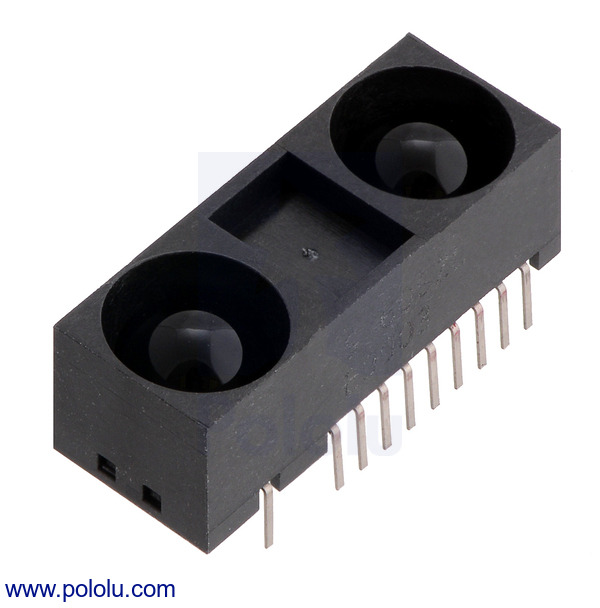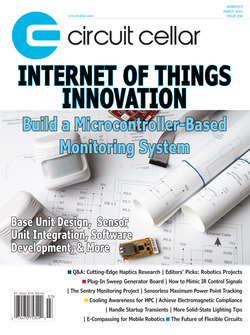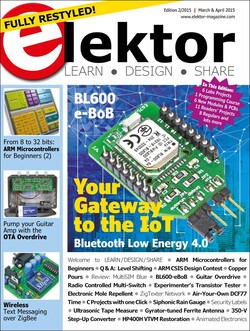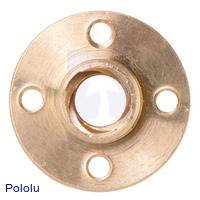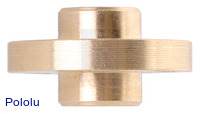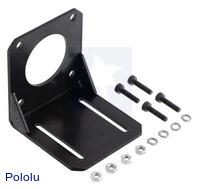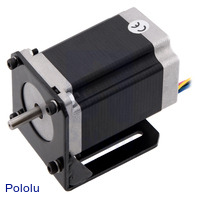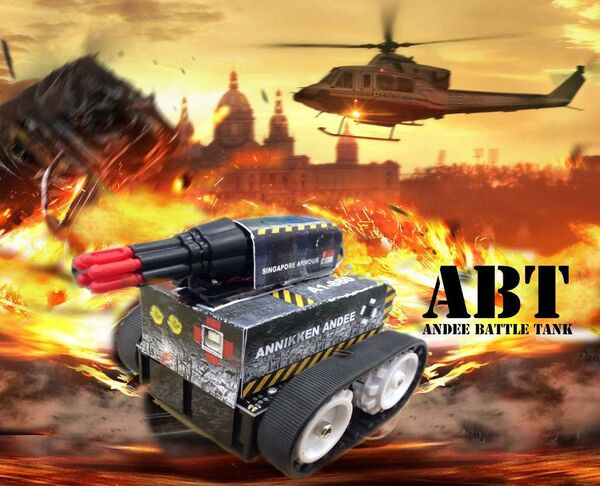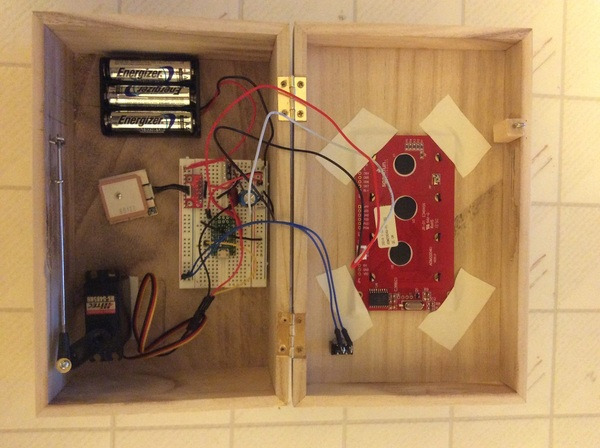Pololu Blog »
Pololu Blog (Page 49)
Welcome to the Pololu Blog, where we provide updates about what we and our customers are doing and thinking about. This blog used to be Pololu president Jan Malášek’s Engage Your Brain blog; you can view just those posts here.
Popular tags: community projects new products raspberry pi arduino more…
Zumo 32U4 kit assembly video
A customer of ours who is a software engineer in Seattle made this detailed video showing how to assemble the new Zumo 32U4 robot kit. Thanks for sharing it with us, Jamie!
Video: Setting the Current Limit on Pololu Stepper Motor Driver Carriers
One of my many roles here at Pololu is overseeing technical support, and I have seen countless cases of customers who have problems with their stepper motor systems because they have not properly set the current limit on their stepper motor driver. To address the issue, we have made a new video that demonstrates how to set the current limit on our stepper motor driver carriers. The video also provides helpful tips and points out a few common pitfalls.
A DRV8825 carrier is used for the demonstration, but the video also applies to our A4988, DRV8824, and DRV8834 stepper motor driver carriers. In the demo, signals for the driver are provided by an Arduino-compatible A-Star 32U4 Prime SV. Here is a simplified version of the Arduino code from the video that can be used to step a motor in both directions:
/* Simple step test for Pololu stepper motor driver carriers
This code can be used with the A4988, DRV8825, DRV8824, and
DRV8834 Pololu stepper motor driver carriers. It sends a pulse
every 500 ms to the STEP pin of a stepper motor driver that is
connected to pin 2 and changes the direction of the stepper motor
every 50 steps by toggling pin 3. */
#define STEP_PIN 2
#define DIR_PIN 3
bool dirHigh;
void setup()
{
dirHigh = true;
digitalWrite(DIR_PIN, HIGH);
digitalWrite(STEP_PIN, LOW);
pinMode(DIR_PIN, OUTPUT);
pinMode(STEP_PIN, OUTPUT);
}
void loop()
{
// Toggle the DIR pin to change direction.
if(dirHigh)
{
dirHigh = false;
digitalWrite(DIR_PIN, LOW);
}
else
{
dirHigh = true;
digitalWrite(DIR_PIN, HIGH);
}
// Step the motor 50 times before changing direction again.
for(int i = 0; i < 50; i++)
{
// Trigger the motor to take one step.
digitalWrite(STEP_PIN, HIGH);
delay(250);
digitalWrite(STEP_PIN, LOW);
delay(250);
}
}
Video: Zumo 32U4 Robot Example Projects
We have a new video showing several projects you can do with a stock Zumo 32U4 robot. The Zumo 32U4’s motors, encoders, line sensors, proximity sensors, accelerometer, gyroscope, LCD, LEDs, and buttons make it a versatile robot that can be used in a wide variety of projects. The ATmega32U4 microcontroller on the Zumo 32U4 robot can be programmed in C++ from the Arduino IDE.
All of the projects shown in the video use unmodified, stock Zumo 32U4 robots (except for the Zumo driving on the refrigerator, which had strong magnets taped to it). However, you can open up even more possibilities by adding your own electronics to the Zumo 32U4. The FuzzBot, Pixy Pet, and this smartphone-controlled tank are some example projects by our customers that involved adding hardware to our older Zumo Robot for Arduino.
The source code for many of the projects shown in the video is available as examples in Zumo32U4 library, and we are working on adding more of them. Check it out, and get some ideas for a cool Zumo 32U4 project!
New product: Sharp GP2Y0A60SZLF Analog Distance Sensor
We are now offering Sharp’s GP2Y0A60SZLF analog distance sensor by itself. This is a great sensor with a wide 4″ to 60″ (10 cm to 150 cm) detection range and a high update rate of 60 Hz, but it requires additional components to use and has a non-standard 1.5 mm pitch. You can use this sensor with our compact carrier boards to make a complete sensor module, or you can get our carrier boards with the GP2Y0A60SZLF already installed.
For more information, see the GP2Y0A60SZLF product page.
Looking for Wixel feedback
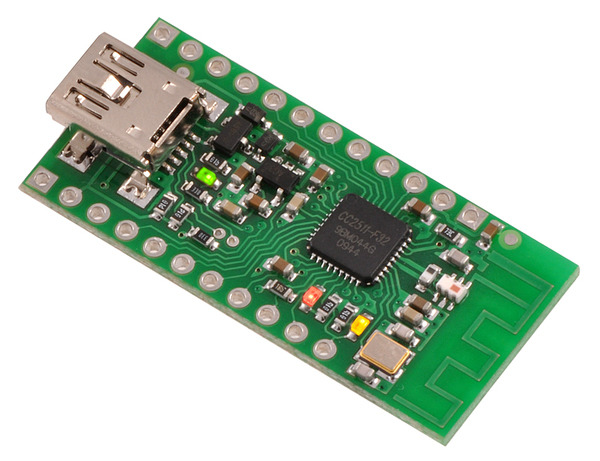 |
PeterPan, an active member of our forum, recently started a thread asking other Wixel users to push for us to get Wixels FCC certified. The Wixel is getting to be one of our older products, so it is due for some updates, too (e.g., our new USB products have moved on to Micro-B connectors). We realize many of our customers do not necessarily want to publicly discuss their projects, so if you do not feel like participating in the forum thread, please feel free to contact us directly about your thoughts on FCC certification and other ways you would like to see the Wixel improved.
Arduino Day 2015 Sale
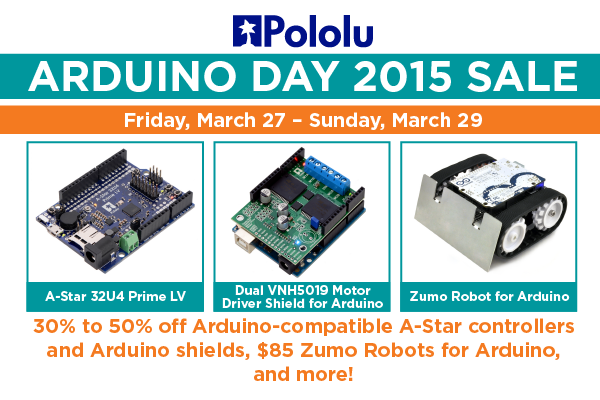 |
Tomorrow is Arduino Day, and we are joining in on the fun by offering big discounts on many of our Arduino-related products, including our A-Star programmable controllers and Arduino shields. The sale has already started, and it will run through the end of Sunday (I know, Arduino Day is a one-day event, but this makes sure the sale lasts all Arduino Day in every time zone). You can find all of the sale items on our Arduino Day 2015 sale page.
Free magazines: March 2015 Circuit Cellar and March/April 2015 Elektor
|
|
Get FREE copies of Circuit Cellar magazine’s March issue and Elektor magazine’s March/April issue with your order, while supplies last. To get your free issues, enter the coupon codes CIRCUIT0315 and ELEKTOR0315 into your shopping cart. The Circuit Cellar magazine will add 6 ounces and the Elektor magazine will add 9 ounces to the package weight when calculating your shipping options.
For back issues and more information, see our free Circuit Cellar magazine offers and free Elektor magazine offers.
New products: Stepper motors with lead screws, traveling nut, and mounting bracket for NEMA 23 stepper motors
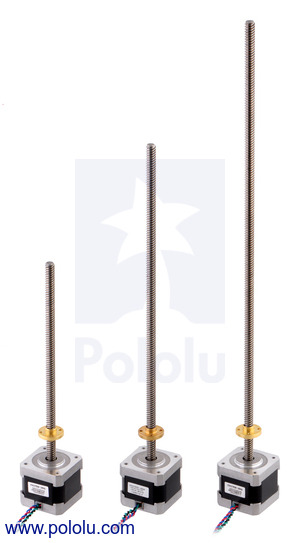 |
NEMA 17-size stepper motors with 18, 28, and 38cm lead screws. |
|---|
Since we started carrying the stepper motor with 28cm lead screw, we have routinely received requests for shorter and longer versions of it, so we are happy to announce that we are now carrying two additional versions: one with an 18 cm lead screw and one with a 38 cm lead screw. All three of the stepper motors with lead screw use the same NEMA 17-size stepper motor, which is also available without a lead screw.
|
|
All of the stepper motors with lead screw come with a traveling nut, also known as a carriage nut. This copper alloy nut features a mounting flange with four holes threaded for M3 screws to make it easy to integrate into your project. From time to time, we also get requests to make the traveling nut available for purchase separately, so we did! If you are interested in picking up some spare traveling nuts, more information can be found on the traveling nut’s product page.
|
|
We also have a new NEMA 23 stepper motor bracket as pictured above. Around eight months ago, we started carrying our stamped aluminum mounting bracket for NEMA-17 size stepper motors, and since then, we added a stamped aluminum NEMA 14 stepper motor bracket to our selection. We looked into getting similar aluminum bracket for NEMA 23-size stepper motors but ultimately decided to go with a more rigid 3mm-thick steel mounting bracket for NEMA 23 stepper motors. On this bracket, two steel supports are welded in the corner along the bend of the bracket to provide extra reinforcement.
Smartphone-controlled Zumo Robot for Arduino Tank
This Instructable by Annikken shows how to turn a Zumo Robot for Arduino into a smartphone-controlled tank. It uses the Annikken Andee for Android (they have one for iOS too), which is an Arduino shield that is connected between the Arduino and the Zumo.
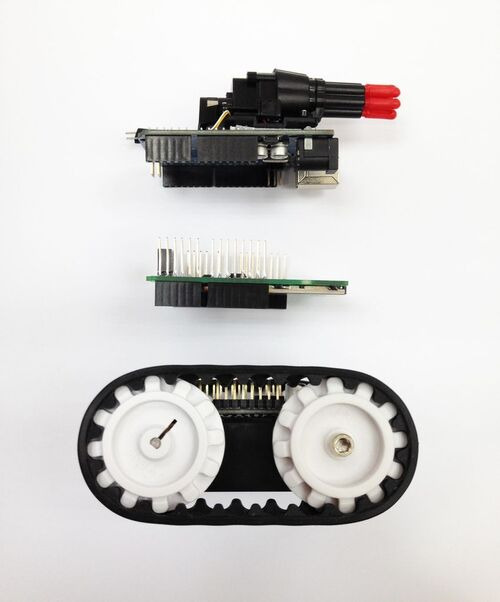 |
Here is a video with the tank driving around:
More details are available on the Instructable page.
GPS puzzle box
Forum user Bob Day shared his GPS puzzle box, which uses an A-Star 32U4 Micro, USGlobalSat EM-506 GPS Receiver, servo, and LCD to open a box only at a specific location. It also uses our S7V8F5 step-up/step-down regulator to provide power the A-Star and GPS module. In his post, Bob says that he got the idea from Mikal Hart’s “Reverse Geocache Puzzle Box”, which you can see in action in this video.
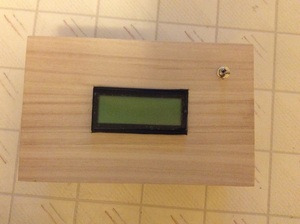 |
Top of GPS puzzle box by forum user Bob Day. |
|---|
Pictures, connections, and the code used for the box can be found in Bob’s forum post.










